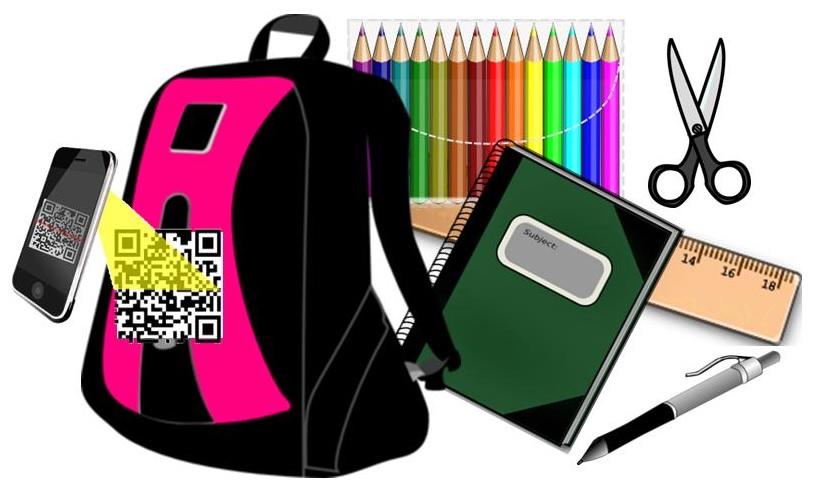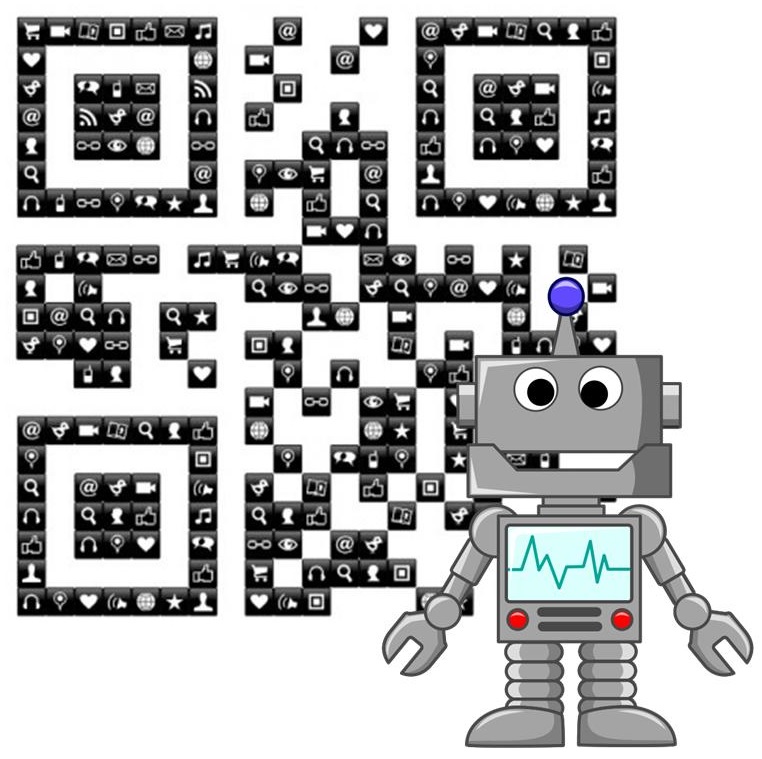These quick response codes can help items to find their way back to their owners.
A startup company called My Lost Property has now been created by the parents of a boy who needed a way to find items that had gone missing, using inexpensive QR codes to make sure that belongings didn’t have to be replaced.
The last straw occurred when the son of the creators – the Sheedy family – lost his school blazer that cost $250.
Spencer Sheedy and his wife Rita recognized that while it is frustrating that their own two kids always had their possessions go missing, their children were far from the only ones who had this happen. It was this realization that encouraged the couple to create My Lost Property. Though the concept is quite simple as it is based on the use of QR codes, it is more innovative than simply using stickers and iron-on labels.
These QR codes are each unique and are registered on a website so that when the item is found it can be returned.
 A missing item’s quick response code can be scanned by someone who finds it. They can then enter the location of the item, which will be automatically texted to the parents so that a pick-up can be arranged. The original concept had involved only stickers for the Sheedy kids. However, it didn’t take long before they found themselves creating labels, keyrings, stickers, and other barcodes for friends. Soon, it became evident that they had a business.
A missing item’s quick response code can be scanned by someone who finds it. They can then enter the location of the item, which will be automatically texted to the parents so that a pick-up can be arranged. The original concept had involved only stickers for the Sheedy kids. However, it didn’t take long before they found themselves creating labels, keyrings, stickers, and other barcodes for friends. Soon, it became evident that they had a business.
Since then, Mr. Sheedy had brought his barcodes and My Lost Property idea to the local schools. He has managed to create a sponsorship arrangement through Schoolzine, which is an online company that produces bulk school newsletters. According to Sheedy, “Schools have been really responsive. They like the simplicity of it, and lost property is such a problem for them.” He explained that he just wants parents to be able to find out about it.
The Sheedy’s knew that they could solve a very expensive problem for many parents and children with the simplicity and ease of QR codes. “When that $250 blazer went missing, we thought we needed to do something more than just the hit-and-miss putting a name on there and hoping it will come back. This just gives you a bit more of a chance of it coming back,” said Mr. Sheedy.
Communicating commands to a robot, particularly in terms of new locations, is now easier with quick response codes.
Being able to instruct a robot in terms of where it should navigate, especially when it comes to new locations, has been a considerable struggle that has previously needed complex technologies, but that could be resolved with something as simple as QR codes.
Previously it was believed to require sophisticated machine vision, and tech such as Bayesian particle filters.
However, recently, this planning was constructed in a very different way, using QR codes to help to guide robot navigation issues of localization. The issue is in the concept that if a robot were to bring you a glass of water or a soda, then that machine would first need to know where it is located and where the drink can be found. Therefore, the robot would essentially require a map and would need to be able to recognize its own location on that map at any given moment.
QR codes are allowing some of the issues within that process to be sidestepped.
 After all, to truly become practical, the robot would also need to be able to create its own maps be “observing” its surroundings and still be able to understand where it is located on the maps that it has constructed on its own. This has been labeled the SLAM problem, which stands for Simultaneous Localization and Mapping.
After all, to truly become practical, the robot would also need to be able to create its own maps be “observing” its surroundings and still be able to understand where it is located on the maps that it has constructed on its own. This has been labeled the SLAM problem, which stands for Simultaneous Localization and Mapping.
The inability to overcome this problem has limited robots to being able to navigate only around a constructed environment where they are programmed for very specific tasks. However, by coming up with a way to give these machines the opportunity to properly gauge and interact with their environments – and their own position within it – then this could present far greater opportunities for their use. Previous methods have involved using advanced technology to be able to label an environment with markers such as RF beacons. However, more recently, a much simpler marker has been employed.
This marker involves simple scanning of QR codes – often called by the nickname of “robot vomit”. These quick response codes are often seen in advertising and product labels, but by sticking them on the features of a space, including doors and walls, it can help robots to better understand their own environments and how to function within them.
 A missing item’s quick response code can be scanned by someone who finds it. They can then enter the location of the item, which will be automatically texted to the parents so that a pick-up can be arranged. The original concept had involved only stickers for the Sheedy kids. However, it didn’t take long before they found themselves creating labels, keyrings, stickers, and other barcodes for friends. Soon, it became evident that they had a business.
A missing item’s quick response code can be scanned by someone who finds it. They can then enter the location of the item, which will be automatically texted to the parents so that a pick-up can be arranged. The original concept had involved only stickers for the Sheedy kids. However, it didn’t take long before they found themselves creating labels, keyrings, stickers, and other barcodes for friends. Soon, it became evident that they had a business.
 After all, to truly become practical, the robot would also need to be able to create its own maps be “observing” its surroundings and still be able to understand where it is located on the maps that it has constructed on its own. This has been labeled the SLAM problem, which stands for Simultaneous Localization and Mapping.
After all, to truly become practical, the robot would also need to be able to create its own maps be “observing” its surroundings and still be able to understand where it is located on the maps that it has constructed on its own. This has been labeled the SLAM problem, which stands for Simultaneous Localization and Mapping.